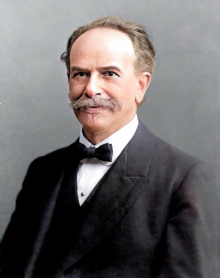Boas examines the artistic and aesthetic aspects of the art produced by non-European cultures, looking at materials, techniques, and the artistic concepts underlying these works. He argues against the idea that primitive art is inferior to Western art and emphasizes the need for cultural relativism when studying art.
 Franz Boas, the Father of American Anthropology, and his impact on cultural anthropology, race studies, and history. Learn from his inspiring quotes!
Franz Boas, the Father of American Anthropology, and his impact on cultural anthropology, race studies, and history. Learn from his inspiring quotes!
More about Franz Boas